Do you have a question about the Philips 50PFL6902 and is the answer not in the manual?
Instructions for safely positioning TVs to prevent tipping and injury.
Recommendations for safe operation and handling of televisions.
Guidance for securely mounting televisions to walls or ceilings.
Important warnings regarding TV stability and safe operation.
Highlights major functionalities like Autoprogram, Net TV, and Child Lock.
Details on various input/output ports like HDMI, USB, Ethernet.
Using HDMI for highest quality and Component for analog.
Steps for connecting the TV to the internet via Ethernet cable.
Instructions for connecting to a wireless network.
How to insert and use a USB memory stick for media playback.
Selecting on-screen language, country, and location.
Configuring wired or wireless network connections.
Process for scanning and storing available TV channels.
Choosing preferred picture and sound modes during setup.
Technical requirements for media file formats on USB devices.
Overview of the setup menu for picture and sound optimization.
Setting preferred picture and sound modes during initial setup.
Fine-tuning Backlight, Contrast, Brightness, Color, Tint, Sharpness.
Ensuring sound settings are saved and selecting auto sound modes.
Steps for finding and storing available TV channels.
Setting parental controls based on TV program age and content ratings.
Setting parental controls based on movie ratings (MPAA).
Connecting the TV to a wireless LAN access point.
Connecting the TV to the network using an Ethernet cable.
Manually configuring network parameters like IP and proxy.
Choosing a wireless network and entering security details.
Configuring IP address, subnet mask, and default gateway.
Performing tests to verify network connection success.
Requirements for upgrading TV software, including PC and USB.
Steps to download software from Philips website and install via USB.
Guide to updating TV software over a network connection.
Steps to mirror device screens to the TV wirelessly.
Prerequisites for home network access, including internet and settings.
Navigating Net TV, managing apps, and accessing the App Gallery.
Steps to create a Pandora account and add user accounts.
Answers to common user queries about TV functions.
Solutions for prevalent problems like remote control or picture issues.
Solutions for issues related to power, remote, and display quality.
Troubleshooting audio problems and signal reception issues.
Addressing interference and ensuring settings are effective.
Troubleshooting network connection, streaming quality, and service access.
Information on warranty period, coverage, and eligible claims.
Details on conditions and items not covered by the warranty.
Instructions for safely positioning TVs to prevent tipping and injury.
Recommendations for safe operation and handling of televisions.
Guidance for securely mounting televisions to walls or ceilings.
Important warnings regarding TV stability and safe operation.
Highlights major functionalities like Autoprogram, Net TV, and Child Lock.
Details on various input/output ports like HDMI, USB, Ethernet.
Using HDMI for highest quality and Component for analog.
Steps for connecting the TV to the internet via Ethernet cable.
Instructions for connecting to a wireless network.
How to insert and use a USB memory stick for media playback.
Selecting on-screen language, country, and location.
Configuring wired or wireless network connections.
Process for scanning and storing available TV channels.
Choosing preferred picture and sound modes during setup.
Technical requirements for media file formats on USB devices.
Overview of the setup menu for picture and sound optimization.
Setting preferred picture and sound modes during initial setup.
Fine-tuning Backlight, Contrast, Brightness, Color, Tint, Sharpness.
Ensuring sound settings are saved and selecting auto sound modes.
Steps for finding and storing available TV channels.
Setting parental controls based on TV program age and content ratings.
Setting parental controls based on movie ratings (MPAA).
Connecting the TV to a wireless LAN access point.
Connecting the TV to the network using an Ethernet cable.
Manually configuring network parameters like IP and proxy.
Choosing a wireless network and entering security details.
Configuring IP address, subnet mask, and default gateway.
Performing tests to verify network connection success.
Requirements for upgrading TV software, including PC and USB.
Steps to download software from Philips website and install via USB.
Guide to updating TV software over a network connection.
Steps to mirror device screens to the TV wirelessly.
Prerequisites for home network access, including internet and settings.
Navigating Net TV, managing apps, and accessing the App Gallery.
Steps to create a Pandora account and add user accounts.
Answers to common user queries about TV functions.
Solutions for prevalent problems like remote control or picture issues.
Solutions for issues related to power, remote, and display quality.
Troubleshooting audio problems and signal reception issues.
Addressing interference and ensuring settings are effective.
Troubleshooting network connection, streaming quality, and service access.
Information on warranty period, coverage, and eligible claims.
Details on conditions and items not covered by the warranty.
| Screen shape | Flat |
|---|---|
| Response time | 9.5 ms |
| Display diagonal | 50 \ |
| Display brightness | - cd/m² |
| Display technology | LED |
| Native aspect ratio | 16:9 |
| Native refresh rate | 60 Hz |
| Supported video modes | 480i |
| Contrast ratio (typical) | 5000:1 |
| Display diagonal (metric) | 127 cm |
| Screen format adjustments | 4:3, 14:9, 16:9, Zoom |
| Supported graphics resolutions | 640 x 480 (VGA), 720 x 480, 800 x 600 (SVGA), 1024 x 768 (XGA), 1280 x 1024 (SXGA), 1280 x 768 (WXGA), 1360 x 768 (WXGA), 1400 x 1050 (SXGA+), 1440 x 900 (WXGA+), 1680 x 1050 (WSXGA+), 1920 x 1080 (HD 1080), 3840 x 2160, 4096 x 2160 |
| Motion interpolation technology | PMR (Perfect Motion Rate) 120 Hz |
| Equalizer | Yes |
| RMS rated power | 20 W |
| Number of speakers | 2 |
| Equalizer bands quantity | 5 |
| AC input voltage | 120 V |
| Power consumption (standby) | 0.5 W |
| Power consumption (typical) | 125 W |
| On/off switch | - |
| Product color | Black |
| Panel mounting interface | 300 x 200 mm |
| 3D | No |
| Audio formats supported | AAC, AC3, MP3 |
| Image formats supported | JPG |
| Video formats supported | AVC, H.264, H.265, HEVC, MPEG1, MPEG2, MPEG4 |
| RF connector type | F |
| RF ports quantity | 1 |
| HDMI ports quantity | 3 |
| USB 2.0 ports quantity | USB 2.0 ports have a data transmission speed of 480 Mbps, and are backwards compatible with USB 1.1 ports. You can connect all kinds of peripheral devices to them. |
| S-Video inputs quantity | 0 |
| Consumer Electronics Control (CEC) | EasyLink |
| Tuner type | Analog & digital |
| Supported TV bands | UHF, VHF |
| Analog signal format system | NTSC |
| Digital signal format system | ATSC |
| Wi-Fi standards | 802.11a, Wi-Fi 5 (802.11ac), 802.11b, 802.11g, Wi-Fi 4 (802.11n) |
| Operating temperature (T-T) | 5 - 40 °C |
| Package type | Box |
| Package depth | 162.6 mm |
| Package width | 1300.5 mm |
| Package height | 746.8 mm |
| Package weight | 13517.05 g |
| Cables included | AC |
| Music apps | Pandora |
| Video apps | Netflix, YouTube |
| Depth (with stand) | 231.14 mm |
|---|---|
| Height (with stand) | 698.5 mm |
| Weight (with stand) | 10115.11 g |
| Depth (without stand) | 88.9 mm |
| Width (without stand) | 1122.7 mm |
| Height (without stand) | 662.9 mm |
| Weight (without stand) | 9797.6 g |
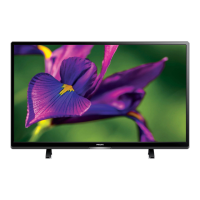
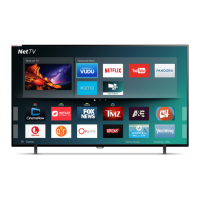
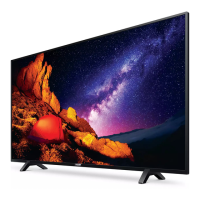
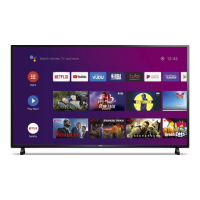




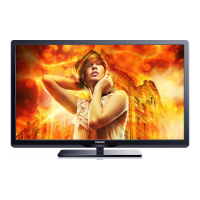

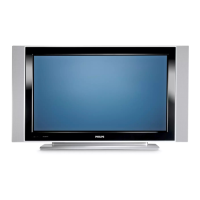
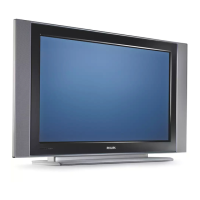
